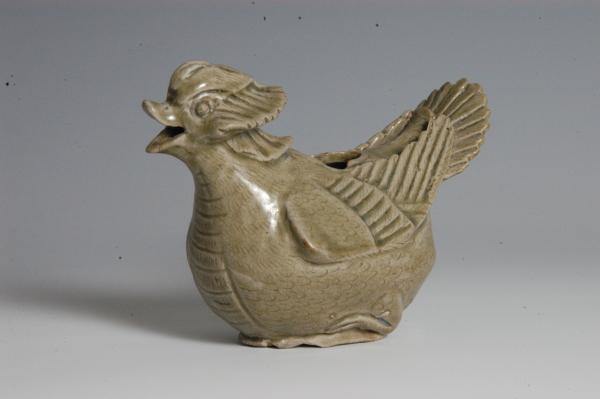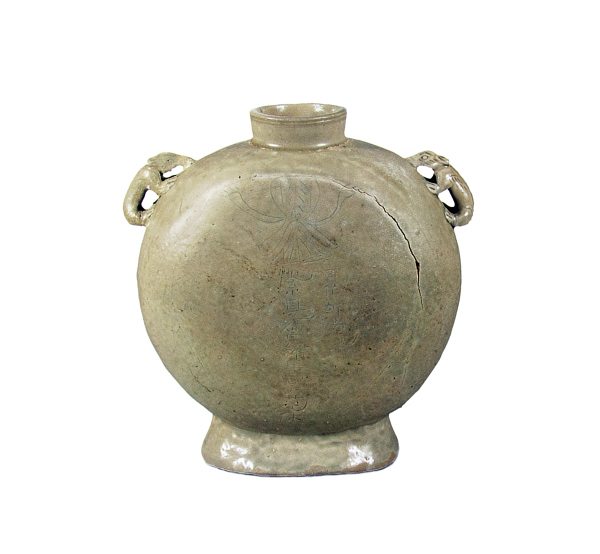In 2018 we planned to take an overseas study tour. One preparation my colleagues and I made was to get information on celadon masterpieces in overseas museums. Among our destinations was USA where many museums have a celadon collection. In order to know more about these collections, I cast a wide net so that that we would not overlook precious celadon exhibits.
Though we eventually did not take the trip, I got to learn a lot about celadon pieces in the Chinese ceramic collections in overseas museums. I learned that eleven important museums in USA such as Metropolitan Museum of Art have their respective collections of Chinese porcelains. And I noticed that some ancient celadon exhibits made in the Yue kilns in Zhejiang were quite impressive. For example, a porcelain bowl with a circular bottom in the collection of Metropolitan Museum of Art, which dates back to the Five Dynasties (907-960), presents three vividly carved dragons on the inside wall of the bowl. The bowl was made at a Yue kiln in Zhejiang.

In fact, archaeologists have excavated a great number of celadons made at Yue kilns around the world. There are about fifty celadon kilns on the western coastline of Japan; at the site of a guesthouse for international diplomats, more than 2,500 celadon shards were unearthed. In Korean Peninsula, celadon pieces have been excavated. A large quantity of celadon shards has been discovered in Thailand. Celadons made in Zhejiang have been found in India, Sri Lanka, the Philippines, Malaysia, Indonesia, Pakistan, Oman, Iran, Iraq, and Egypt, countries which are now considered in the Road & Belt regions.
The overseas fame of celadon made at Yue kilns was more than what celadon makers in Zhejiang expected. And even today, the overseas popularity of celadon in ancient times is more than I expected. The popularity lies in the beauty of celadon.

The Tang (618-907) was a great dynasty in the history of China in many senses. It was in the Tang that shipbuilding became so advanced that seaworthy ships were made and made international trade possible through sea routes. During the Tang, celadon made at Yue kilns was shipped overseas by two major routes. One shipping route went eastward to Korea and Japan. The other went in the opposite direction: the South China Sea, the Indian Ocean, the Persian Gulf, the Arabian Sea, and the Red Sea. The farthest destinations were on the east coastline of Africa. A Japanese scholar said that the shipping route to the West Asia was the Road of Porcelain. A sunken ship discovered in 2003 near Java, Indonesia had more than 490,000 objects in its holds. Salvaged from the wreckage were over 300,000 celadon pieces made at Yue kilns.

The beauty of Yue -kiln celadon lies partly in its intricate designs. Among the extant celadon antiques in museum collections are some masterpieces of art. A celadon kettle unearthed from a tomb of the Western Jin (265-316) in Nanjing presents an eagle ingeniously sculptured on the object. The head, the talons, the wings of the eagle depicted on the kettle so many centuries ago would wow people of today. A celadon artwork in the collection of the Palace Museum in Beijing features a bird sculpture glued to a cup. The bird head is slightly above the edge of the cup. When one holds the cup high, the cup looks like a bird in flight.
The beauty of Yue-kiln celadon lies also in the colors. These colors are smooth and serene, graceful and they look like jade and ice. In ancient poems, such celadon tints are compared to the greens of the peaks or the azures of the sky after rain or the fuzzy greens of lotus leaves.
My understanding of the glory and beauty of Yue-kiln celadon is partly associated with the celadons in overseas museum collections which I admired in my research for the aborted study tour.
